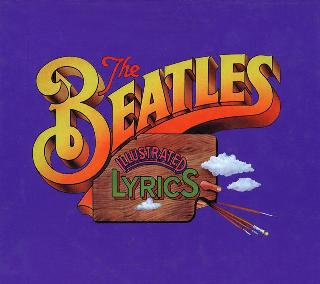Index
Home
Vorige
Blue Jay Way
Composer(s) : Harrison
Year : 1967
Chords/Tabs: Blue Jay Way
Notes on "Blue Jay Way" (BJW)
KEY C Major/modal
METER 4/4
FORM Intro -> Verse -> Refrain ->
Verse -> Refrain ->
Verse -> Refrain -> Refrain -> Outro (fadeout)
GENERAL POINTS OF INTEREST
Style and Form
- Thes style of this song is surely derived from Indian music though,
compared to the likes of
"Within You Without You," the exotic influence
is much less direct, as it is applied only to the use of a drone bass,
and a somewhat modal, raga-like tune. For a change, no explcitly
Indian instruments are incorporated, nor is there anything much in
the way of fancy rhythmic or metrical fireworks.
- The form again is the straight folk ballad, making for an interesting
comparison with
"Fool On The Hill" in context of the MMT song lineup.
- The decision by someone out there to place this song immediately
following "Flying"
on the US version of the MMT album (not to mention
the official CD!) does a real disservice to "Blue Jay Way." The two
tracks are both in the same key, and both are slow paced and static
in form. This winds up making the second of the two seem more
lugubriously plodding and montonous than it might otherwise seem.
- I mean, let's not mince words -- BJW pursues a kind of plodding
monotony to *purposely* make a point. I just think that
"Flying"
is a particularly poor choice of an animal act for it to have to
follow. In both the film, as well as the original EP lineup (where
it appears by itself on side 'D', it has much more breathing space
in which to be.
Melody and Harmony
- The mode is highly unusual; a Major scale variant with both a
raised 2nd and 4th degree:
C D# E F# G A B C
The raised 4th sits at a tangy, off-center augmented fourth from the
root of the home key. This has its precedents in both Indian ragas as
well as the Western Lydian mode.
The raised 2nd sits at an augmented 2nd from the root, which is equally
as tangy though much less precedented than the augmented 4th. You're
much more likely to bump into melodic augmented seconds that occur in
scales that have a *diminshed* 2nd degree (e.g. D flat), in which case,
the augmented interval falls between the 2nd and 3rd scale degrees.
- For the verse melody, George uses this scale in a manner more characteristic
of 19th century European music than the classically Indian; outlining the
diminished 7th chord that is inherent in his chosen scale to imply the
romantic sounding ii-dim.7 -> I chord progression. Compare this to the
either IV->I or ii7 -> I and note how much anxious tension is added by
the two chromatic alterations.
The ii-dim.7 should not be confused with the perhaps more familiar
vii-dim.7 chord. The latter functions as a Dominant "V" surrogate
in which all four notes of the chord resolve stepwise in the move
to I. The ii-dim.7 chord is more like a Subdominant "IV" surrogate
in which 3 of the 4 notes of the chord resolve stepwise while the
fourth one is sustained between the two chords.
- The refrain melody has more of the Indian flavor you would have
expected based on the sound of the track's intro. It provides the
completion of the melodic arch that starts off in the verse and
conveys unusual pathos by virtue of its stress, over the bassline
drone, on the 7th and raised-4th scale degrees; the latter being
leaned on for a nice #4->3 appogiatura.
Arrangement
- The arrangement is a veritable kitchen-sink mix of various special
recording and mixing effects used by the Beatles over the course of
the _Revolver_ and _Sgt Pepper_ albums, with the texture generally
increasing in thickness and intensity over the course of the piece.
- The foggy atmosphere and texture created by the special recording
effects are the best part of this song, for some; they certainly
represent the most fully developed aspect of it. Yet, as I recently
pointed out with regard to
"Fool On The Hill," the effects are far
from musically essential to the song, per se.
SECTION-BY-SECTION WALKTHROUGH
Intro
- The intro is played "ad libitum," without meter, though in terms of
duration it seems about ~8 measures long; more or less the same length
as either a verse or refrain:
1 2 & 3 &4 &
"There's a fog upon L.
|C |..... ...|d# dim. 7 |
C: I #ii dim.
- Electronic manipulation of recorded sound notwithstanding, the
intro is layered here in a manner not at all atypical of your standard
Beatles song: the organ drone first as a single octave of C natural,
next the bassline fills out one octave lower, next the C Major chord
is filled in followed by a *very* soft intimation of the tune later
heard in the refrain, followed by a solo cello anticipating the F#->E
appogiatura that will later characterize the ending of the refrain.
In the final measure, we get the pickup to the first verse.
- There also is some (perhaps not specifically intended) tapping noise
under the opening measures.
Verse
- The verses are all 1 beat shy of a full, even eight measures; a
gesture which subtly conveys the impatience of waiting longer than
you think you should have to:
1
A." ...
|C |d# dim.7 |C |d# |
I #ii dim. I #ii dim.
1 2 3
|- |- |C |- |
I
- The arrangement of the first verse is dominated by the thumping
bassline and the electronically processed drop-ins of the backing
vocals deployed in antiphony with the lead; the whole thing topped off
with that cymbal slash at the end.
- In the second verse, the cymbals and full drum kit play all the way
through and the backing vocals sound even more processed. In the third
verse, the backing vocals sing rhyming melismas in antiphony with the
lead. In the last measure of each section the thumping beat is
suspended and haunting flashes of backwards tape effects are allowed
to peep through for an instant.
Refrain
- The refrain, in contrast to the verse, is a full 8 measuures long
plus one additional measure to serve as a pickup to the next verse,
more than compensating for that missing beat at the end of each verse.
- The harmony of this section is entirely a drone of the I chord,
except for the pickup 9th measure which serves as #ii dim.7.
- The eight measures are filled with four phrases that make a poetic
pattern of AA'A''B. The four phrases are more evenly distributed
over the course of the eight measures than they sound because each
of the three 'A' phrases begins on a different beat of the measure.
- Following that the cymbal crash at the end of the first verse, the
drum kit stays in evidence for the complete remainder of the song.
The drums are actually already there in the first verse itself, but
they keep a low profile of merely reinforcing the thumping bassline.
- Similarly, the cello becomes more of an equal paticipant from the second
refrain forward.
Outro
- The outro is relatively long in proportion to the rest of the song.
It grows directly out of continued variations of the final refrain,
but also takes on a life of its own.
- The variational approach is already present in that 3rd refrain and
continues unabated from there to the end, though you barely notice
it except in retrospect. I find this compositionally impressive to
to the extent that it all "sounds" improvised, yet anyone who has
played in a group knows that you can't just make this kind of thing
up as you go along; it takes *careful* planning.
- So trace it for yourself -- each successive iteration gets shorter
and less elaborate; a kind of musical equivalent of DaVincian perspective:
- Refrain 3 is only 7.5 measures long; facilitated by the way the
sung phrase, "or I may be asleep," starts 2 beats earlier than it
did in the first two refrains.
- Refrains 4 and 5 are also 7.5 measures long, but they entirely
drop the singing of that final ("or I may be whatnot ...") phrase.
- Refrains 6 and 7 are increasingly shorter, and they feature what
you'd think is a new "don't be long" tune, but one that turns out
to be introduced by the backing voices as early as refrain #3!
- Just when you think the outro could go on forever, the plain drone
reasserts itself, pianissimo, and the song is over. You can wait at
the airport, seemingly, forever, but once you decide to turn on your
heels, the wait is over.
SOME FINAL THOUGHTS
- The I'm-so-tired subtext of the song seems curious in light of the
annecdote we know about the song's inspiration.
- Have *you* ever waited at the airport, like George did, late at night
for someone on a flight that has been delayed by bad weather? Yes, I'll
bet you felt just as impatient and ready for sleep (or bed, at least) as
the author of our song expresses himself to be.
- But then again, didn't you also feel, perhaps, some kernel of eager
anticipation of whomever you were waiting for; something that elevated
the droodgery of waiting into a so-called labor of love.
- I mean, after all, you'd expect our George to understand and accept
with better grace that airplane filghts, just like birthday greetings,
sometimes arrive belatedly.
Regards,
Alan (awp@world.std.com)
---
"There's a fog upon LA." 010597#125
---
Copyright (c) 1997 by Alan W. Pollack
All Rights Reserved
This article may be reproduced, retransmitted, redistributed and
otherwise propagated at will, provided that this notice remains
intact and in place.
Ook op Magical Mystery Tour:
Ook op Love:
(c) 2024 Serge Girard


 (c) Alan Aldrigde, The Beatles Illustrated Lyrics
(c) Alan Aldrigde, The Beatles Illustrated Lyrics